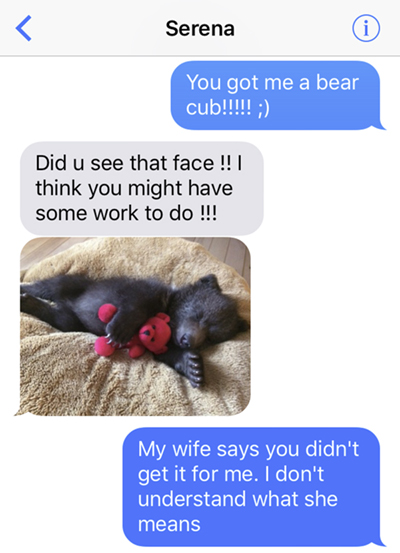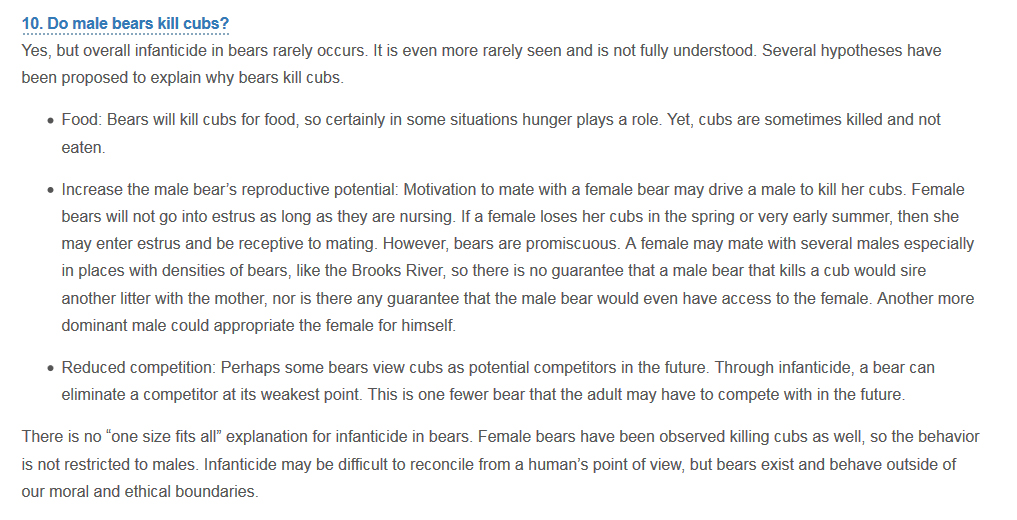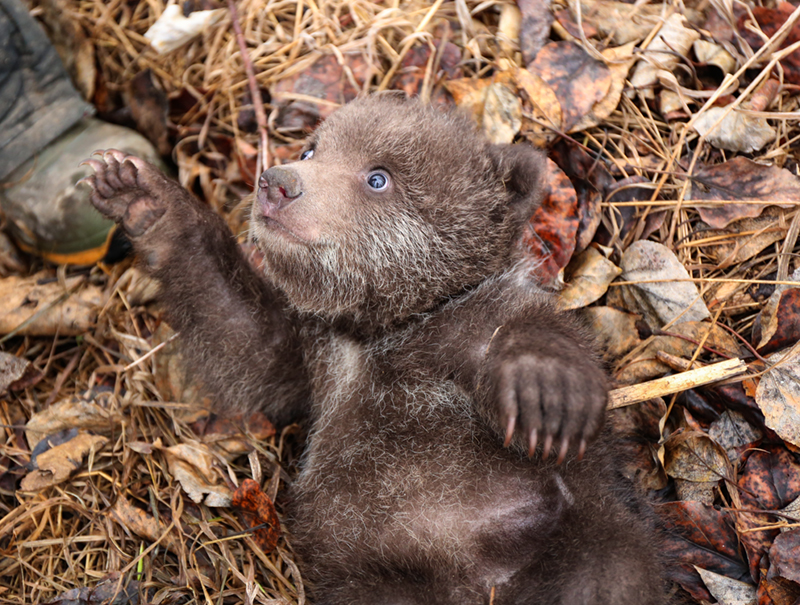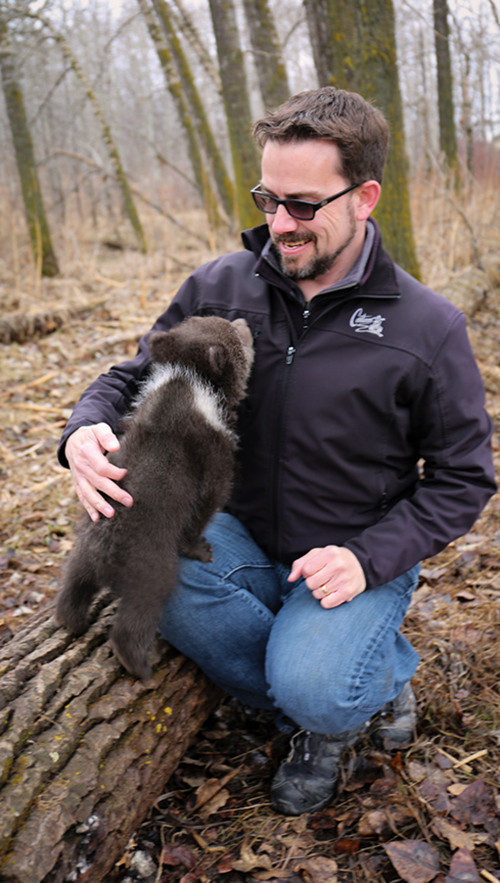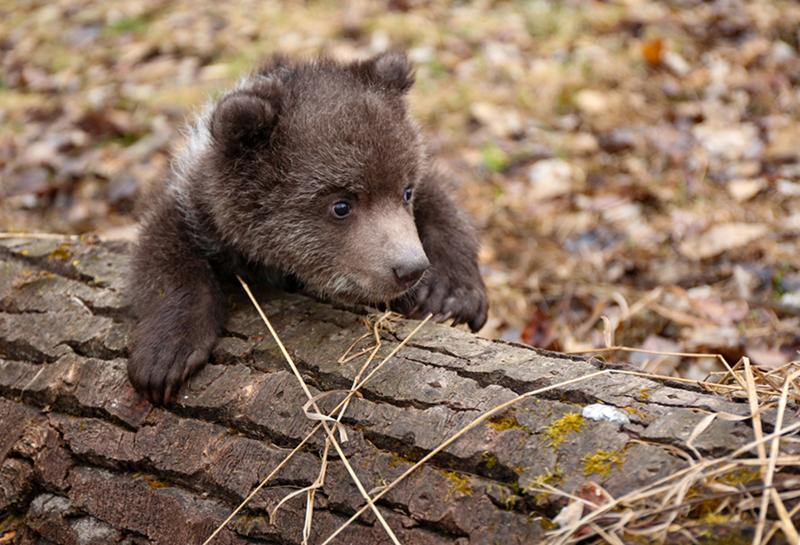
It has been my great pleasure to spend time at Discovery Wildlife Park in Innisfail, Alberta over the past few years. While you might think it has simply been for the opportunity to take reference photos for paintings and another venue for selling my poster prints, the benefits have been so much more.
Last Thursday, I dropped off a large batch of poster prints for their upcoming season. I’ve gotten to know these good folks and it was great to catch up with a few of them. Noticeably absent, however, was Serena Bos, the head keeper. I was told that she was on a road trip.
“Good road trip or bad road trip,” I asked.
“Good road trip. You’re going to love this,” Mari told me. She’s one of the other keepers whose company I enjoy when I’m at the park.
That’s all she’d say and despite my annoying questions (fine, I was almost begging), she wouldn’t tell me anything.
As a result, I’ve been keeping a close eye on their Facebook page, waiting for the announcement. On Thursday, I saw the first photos of Berkley, a Kodiak bear cub..
I sent Serena a text…
As the conversation progressed, I joked that I wasn’t going to be able to see her until late May. They don’t open until May 1st, I have the Calgary Expo that weekend, will be away the week after that and the month of May is quite busy. She’ll have grown so much.
Serena generously offered me a private visit with Berkley if I could come up the following day, an opportunity I wasn’t about to pass up. While my relationship with the park has afforded me behind-the-scenes experiences like this before, it’s a special circumstance I never take for granted.
Luckily, Discovery Wildlife Park is just a little over two hours away and the roads were good. The looming last gasp of winter weather didn’t hit that area until that evening when I was already back in Canmore.
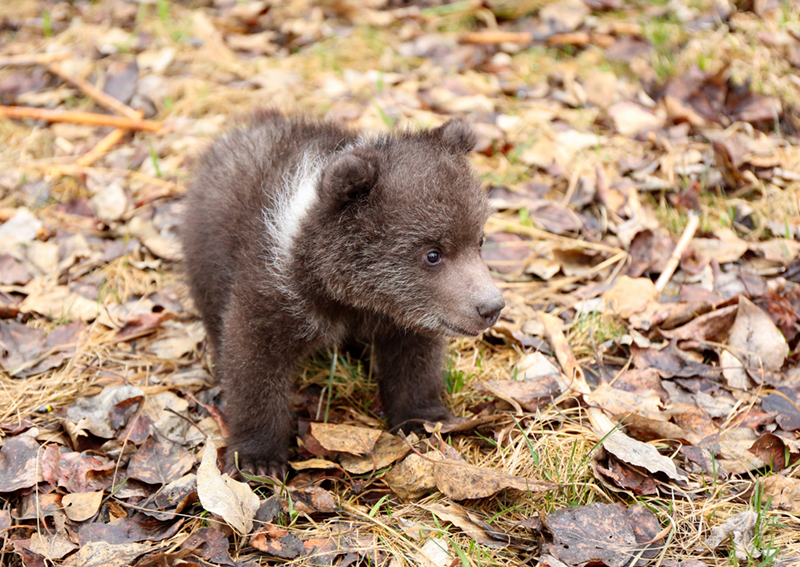 Berkley is a recent immigrant from the U.S., but all of her paperwork is in order. She comes from a facility where her mother’s pregnancy was unexpected and the father was still present. Sadly, he killed the second cub. While it doesn’t happen often, it does happen. Here’s an explanation of why from a Q&A on the National Park Service website…
Berkley is a recent immigrant from the U.S., but all of her paperwork is in order. She comes from a facility where her mother’s pregnancy was unexpected and the father was still present. Sadly, he killed the second cub. While it doesn’t happen often, it does happen. Here’s an explanation of why from a Q&A on the National Park Service website…
Many people on the Discovery Wildlife Park Facebook page are asking why she was taken from her mother so young. The simplest reason was that her life was in danger and the mother wasn’t caring for her in a manner that would have prevented it. Nature is often harsh. An uncomfortable reality, but reality nonetheless.
Serena has always encouraged me to ask a lot of questions and while I have been respectful, I’ve asked some that might have been taken for antagonism. Thankfully, we know each other well enough now that she understands I just want to learn and she’s as frank with her answers as I am with the questions.
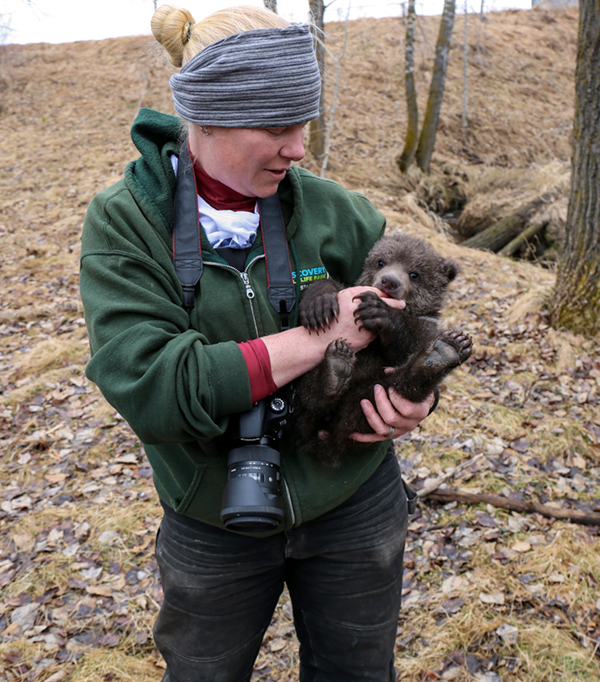 We took Berkley into a wooded area on the park property and let her run around. Careful to keep her away from a nearby small stream, we both snapped pictures and Serena answered plenty of my questions.
We took Berkley into a wooded area on the park property and let her run around. Careful to keep her away from a nearby small stream, we both snapped pictures and Serena answered plenty of my questions.
Here’s some of what I learned…
Berkley will be with Serena or another caregiver 24 hours a day likely until midsummer when she will slowly get used to spending the night alone in her own enclosure. This will be done gradually and eventually she will be happiest on her own, as most brown bears are.
As Berkley could never be a wild bear, there is no danger of her seeing too many people. While she will have a strictly regulated diet for the rest of her life, people smells and our environment means she will always associate us with food, a situation that results in too many euthanized bears in the wild.
While she only weighs just over ten pounds now, Berkley will eventually grow to be an 800-1000 pound big beautiful bear over the next 5-8 years. I am grateful I got to interact with her now, because it’ll never happen again when she’s an adult. That being said, the keepers will have a daily relationship with her for the rest of her life and she will most likely view them as we would a family member we’ve known and trusted for years. Watching the staff interact with the adult bears they’ve raised from cubs never fails to make me smile.
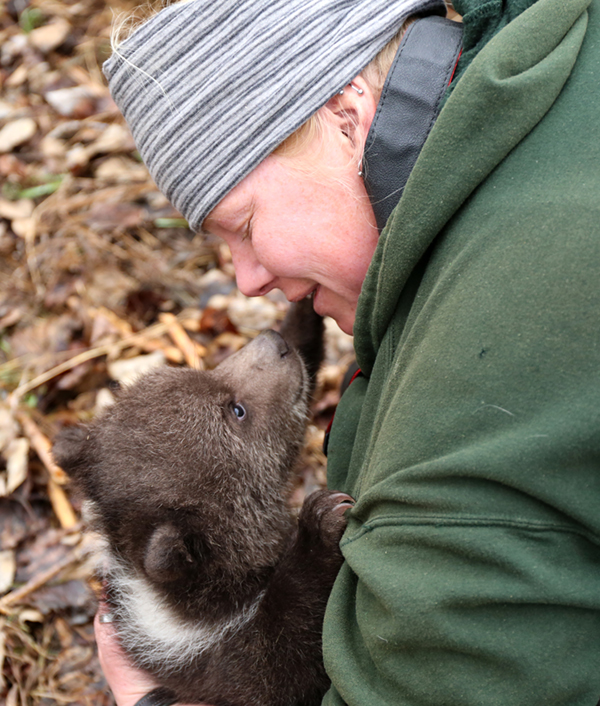 In the wild, a Kodiak bear’s life expectancy is around 8 years. If all goes well with the circumstances they can control, Berkley can expect to live 25 or more at Discovery Wildlife Park.
In the wild, a Kodiak bear’s life expectancy is around 8 years. If all goes well with the circumstances they can control, Berkley can expect to live 25 or more at Discovery Wildlife Park.
Little Berkley has very sharp teeth and nails. In most of the pictures I got with her, you’ll notice I keep my hands closed, although I did get to pet her when she was distracted and Serena said it was OK. I’m not familiar enough to her that I can trust that she wouldn’t bite or scratch me.
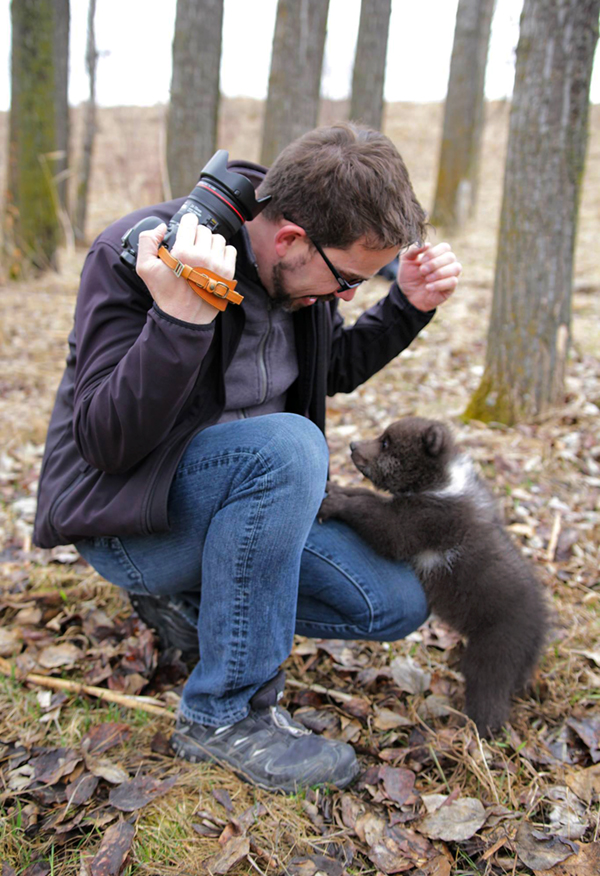 At one point Berkley fell off a log and made a squealing noise on the way down and as she hit. My instinct was to grab her but I kept my hands to myself. Serena said that was the right call, because with Berkley flailing about, she very likely could have seriously hurt me. And bears are tougher than we are. The noise she was making wasn’t because she was hurt, it was just because she was scared. She was back on her feet and running around right away.
At one point Berkley fell off a log and made a squealing noise on the way down and as she hit. My instinct was to grab her but I kept my hands to myself. Serena said that was the right call, because with Berkley flailing about, she very likely could have seriously hurt me. And bears are tougher than we are. The noise she was making wasn’t because she was hurt, it was just because she was scared. She was back on her feet and running around right away.
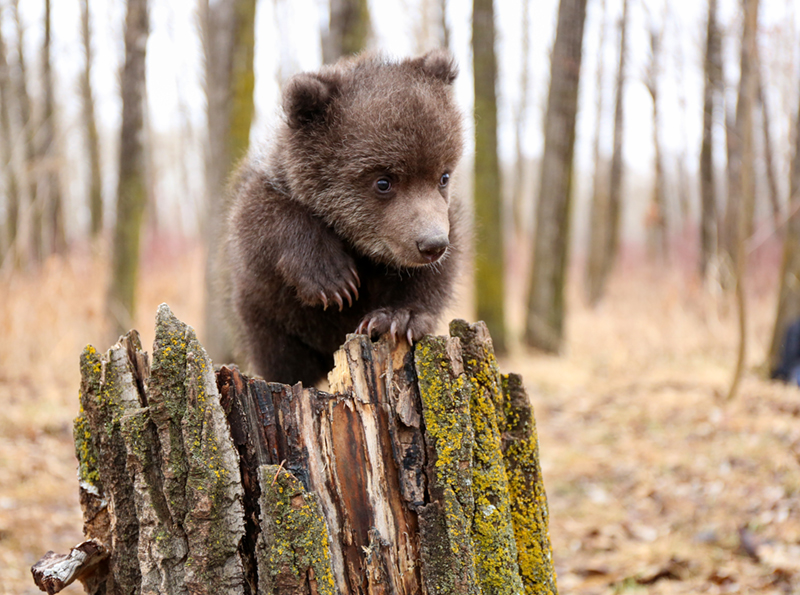 Berkley is going to be a teacher, in more ways than one. She will be trained to perform tasks and tricks (for lack of a better word) for a couple of reasons. One, it will keep her mind active and is a form of enrichment. In the wild, a bear will always be looking for food and that keeps their brain going. In captivity, where food is provided, it’s the job of her caretakers to provide her with things to think about and problems to solve.
Berkley is going to be a teacher, in more ways than one. She will be trained to perform tasks and tricks (for lack of a better word) for a couple of reasons. One, it will keep her mind active and is a form of enrichment. In the wild, a bear will always be looking for food and that keeps their brain going. In captivity, where food is provided, it’s the job of her caretakers to provide her with things to think about and problems to solve.
But it will also mean she will get used to being trained, so that when it comes time to present her paw for a blood sample or to urinate on command for testing, she will view it as routine without any stress. These tasks will not only contribute to her overall health, but will provide a valuable scientific resource.
Just like some of the other bears in the Park, Berkley will provide baseline health data of a bear living a low stress life, a consequence of having a regular diet, enrichment and veterinary care. This information will be of great use to select post-secondary schools and research institutions that study bears in different environments. If you know what the data for a low-stress bear looks like, you know how to measure against data for a high stress bear. This will directly aid in wildlife conservation and research, for regions where bears might be living in less than ideal conditions in the wild.
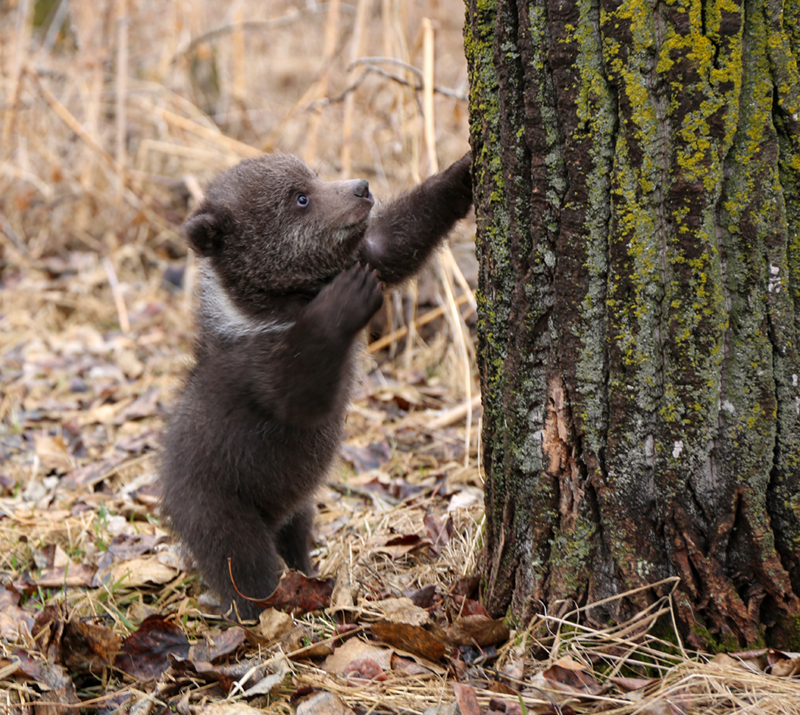 You might wonder, as I did, how Berkley will fare since she won’t have her bear Mom to teach her how to be a bear. Serena assured me that there is a lot of instinct involved in bear behaviour. In the time we were out in the wooded area, that became evident as Berkley climbed over logs, scratched at trees, and scurried around sniffing at everything. She looked like a bear to me.
You might wonder, as I did, how Berkley will fare since she won’t have her bear Mom to teach her how to be a bear. Serena assured me that there is a lot of instinct involved in bear behaviour. In the time we were out in the wooded area, that became evident as Berkley climbed over logs, scratched at trees, and scurried around sniffing at everything. She looked like a bear to me.
Her development will be fast. In just the three days since I’d seen a video of Berkley wobbling around on unsteady feet, I saw a completely different bear when I got there. While playing with her, I broke into a bit of a run and her being a bear, she gave chase. I had to run faster, almost up to my own full speed as this tiny little bear kept gaining on me.
Unsteady? Not for long.
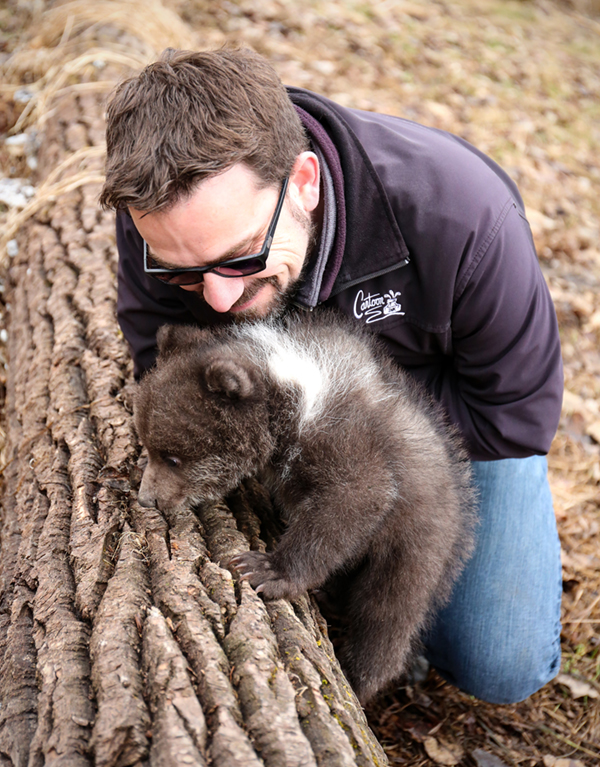 I could go on at great length about all that I learned yesterday, but I would encourage you to go see Berkley in person, along with all of the other critters who live at Discovery Wildlife Park when they open May 1st. Go with an open mind, leave your conclusions at the gate and if you have any questions, please ask any of the helpful staff you’ll encounter.
I could go on at great length about all that I learned yesterday, but I would encourage you to go see Berkley in person, along with all of the other critters who live at Discovery Wildlife Park when they open May 1st. Go with an open mind, leave your conclusions at the gate and if you have any questions, please ask any of the helpful staff you’ll encounter.
Take part in the different talks they do and consider some of the other programs available. For a small fee, you can even get your picture taken with GusGus the beaver. Tell him I sent you and ignore him if he says he doesn’t know who I am. Trust me, we’re old friends.
Like all of my experiences at the park, my time with Berkley was special and it’s a day I won’t soon forget. I’m already planning a painting of this little diva, but by the time it’s done, she’ll have grown a fair bit, so maybe I’ll just have to keep painting her to keep pace.
Hey, there’s an idea.
Big thanks to Serena Bos and all of the other dedicated staff at Discovery Wildlife Park. You all make me want to be a better human. Any photos seen here with me in the picture, Serena took the shot.

